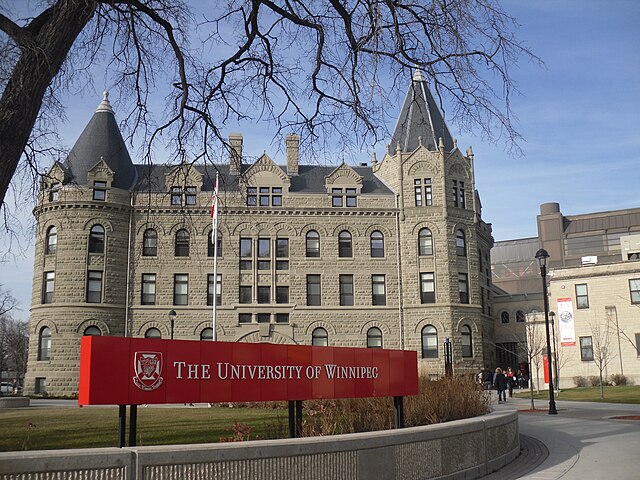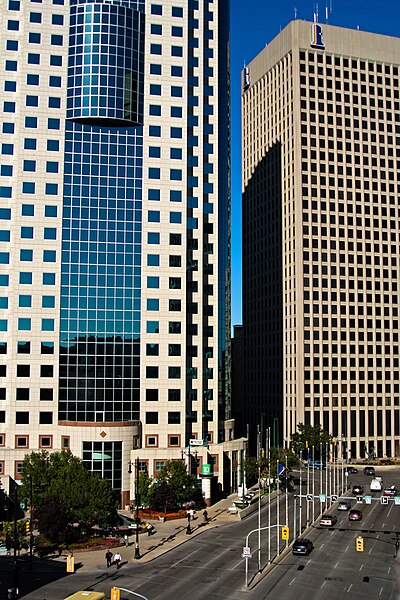The Winnipeg General Strike of 1919 was one of the most famous and influential strikes in Canadian history. For six weeks, May 15 to June 26, more than 30,000 strikers brought economic activity to a standstill in Winnipeg, Manitoba, which at the time was Canada's third largest city. In the short term, the strike ended in arrests, bloodshed and defeat, but in the long run it contributed to the development of a stronger labour movement and the tradition of social democratic politics in Canada.
Crowd gathered outside old City Hall during the Winnipeg general strike, June 21, 1919
Anti-strike banner used in loyalist veterans parade during the 1919 Winnipeg general strike
RNWMP action in Winnipeg during the strike
Winnipeg general strike turns into a riot.
Winnipeg is the capital and largest city of the province of Manitoba in Canada. It is centred on the confluence of the Red and Assiniboine rivers, near the longitudinal centre of North America. As of 2021, Winnipeg had a city population of 749,607 and a metropolitan population of 834,678, making it Canada's sixth-largest city and eighth-largest metropolitan area.
Image: Uof W
Image: Richardson Building
Image: ST. BONIFACE CATHEDRAL 05
Image: Esplanade Riel Footbridge (38395565385)








